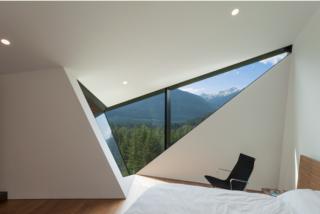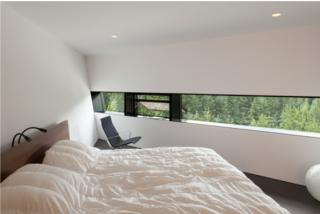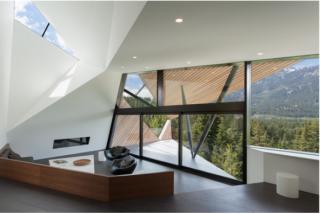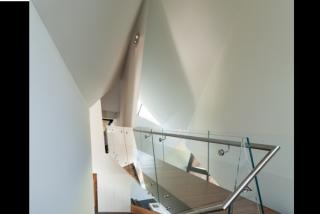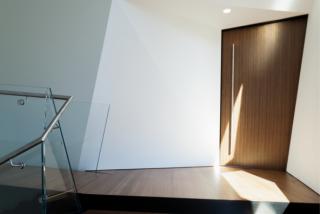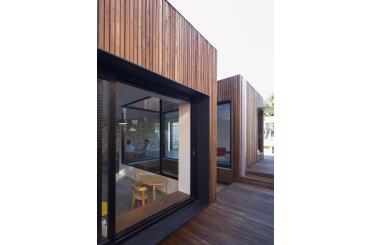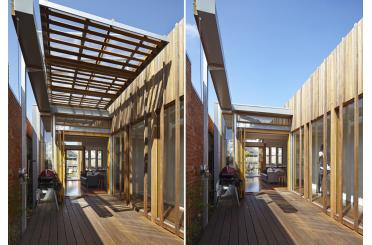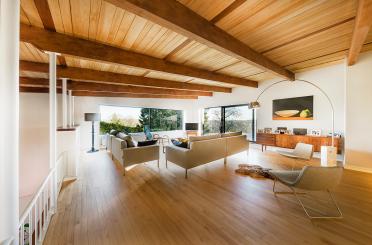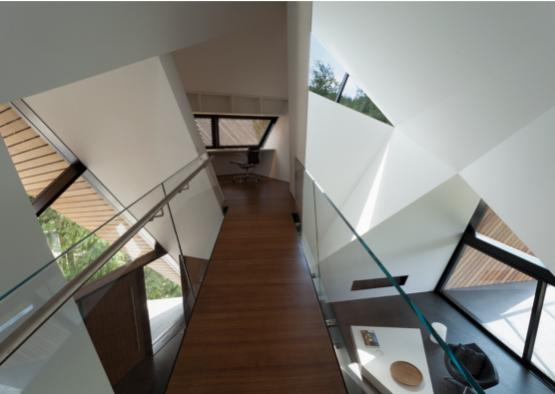
Overview
Perched on a challenging block in the foothills of Whistler Valley, the sculptural form of Hadaway House graces the breath-taking vista with its unique, naturally inspired, timber-clad beauty. Patkau Architects are known for their creative and innovative forms and this alpine gem is no exception.
The house, which deals with the harsh northern winter climes, presents the designer with thermal and structural challenges for which the flexible nature of timber framing is ideal. The stunning expansive rooms feature generous glazing, sensitive room layouts (wet rooms line the retaining wall of the lower level) and interesting architectural details. A pedestrian bridge suspended above the main living space, which links the master bedroom to a study nook, achieves connectivity.
The humble snow-covered exterior blends with the natural architecture of the landscape while a relaxing and light internal feel envelops inhabitants’ immediate space. There is plenty of creative inspiration upon which to draw in the recounting of the days' alpine adventures.
Structure
Two full-height concrete retaining walls navigate the house down steep terrain. The lower retaining wall acts as a vertical support for a dramatic cantilever, likening the house to a rock perched on a steep hill. The lowest level houses two bedrooms and several wet rooms which are cleverly positioned against the retaining walls.
Snow loads and earthquake forces control the structural design in this part of Canada. The ground level is peppered with concrete walls for robust shear resistance while the first-level floor above is concrete as well. This completes a box around the ground floor living space and acts as a shear anchor for the upper storeys. The volume of concrete acts also as a thermal mass for temperature moderation.
The second floor level is timber framed, which completes a design framework that structurally works well for three storey houses. Point loads generated from the highest suspended timber framing level can be easily resolved into the robust concrete suspended slab beneath and carried down via concrete walls to the concrete footings.
The roof geometry presented another major structural challenge due to the high snow loads. The roof steeply peaks and folds with an even more complicated internal ceiling profile. Because the roof pitch is steep and the ceiling is raking, heavy snow loads require horizontal restraint in the form of strong timber bracing walls and laterally spanning timber and steel beams. The structural resolution of the intricate geometry and unusual loads on this house is surely a grand feat of engineering design.
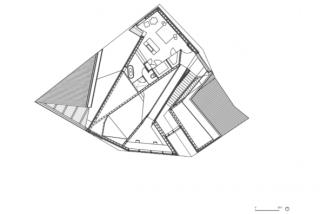
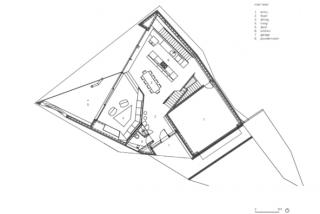
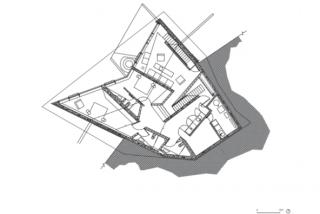
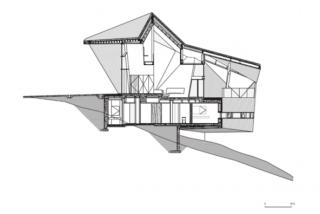
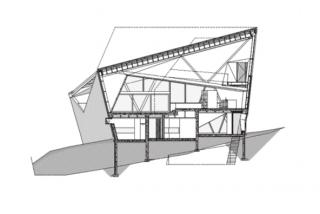
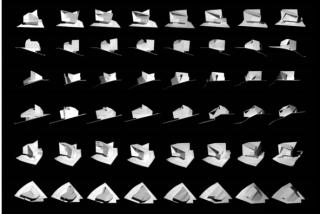
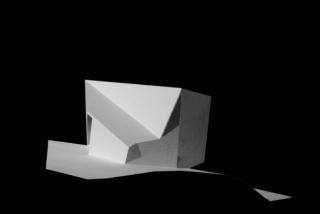
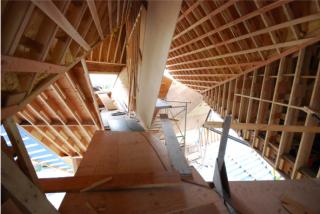
Exterior
The Hadaway House comprises a combination of generous and thermally considerate timber clad and glazed external surfaces. The warm and private Southern facets of the house feature large light catching windows and sliding doors.
The home is clad with a layer of 1" x 5 1/4" Ipê board at 6" C/C spacing. The timber on both the roof and the walls is similar in appearance; however, during the winter months the snow cover on the roof adds a paradoxically warm dimension to the otherwise cool and visually impressive summer form. Ipê (or Brazilian Walnut) timber was chosen for its natural beauty and extremely resilient nature (the only species harder than Grey Ironbark). It is anticipated to weather to a silvery grey, blending with the dwellings of the surrounding alpine neighbourhood as well as the vista into which the home integrates.
The roof design has been guided both by the challenging site and architectural zeal as well as the need to manage snow accumulating on the roof, allowing it to fall in areas which are not trafficked in the winter months.
The low-maintenance cladding overlies a high standing-seam prefinished metal roof with ventilated underlayment membrane, roofing membrane, R40 spray foam insulation overlying the suspended timber framing and plasterboard. The timber framing rafters were a suitable match for the extremely challenging geometry of the house, providing flexibility to trim and perfect during the build.
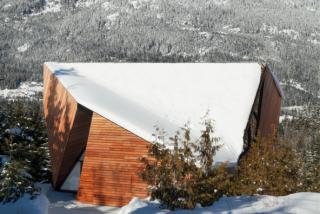
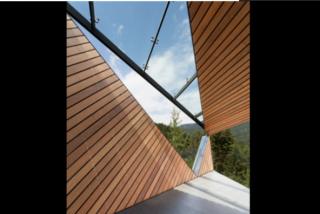
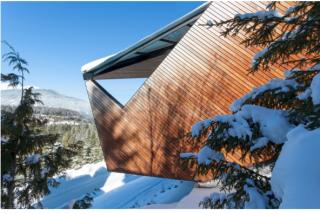
Interior
The rocky external design of the house seamlessly folds inside; none of the living spaces have 90 degree corners, and the ceiling profile rises and tucks unpredictably. The rooms are like angular caves taking advantage of sweeping mountain views.
A sharp crevice in the ceiling space penetrates the deepest parts of the house and beams light into dark spaces. The crevice aligns with the roof ridge, which is ventilated to encourage air circulation. Air is drawn in via the north facing walls on the lowest level.
Material choices for the flooring were thoughtfully selected to perform in the snow-capped area. Internally, concrete slabs have cast-in hydronic tubular heating systems and are topped with walnut floorboards. Timber flooring feels comfortable due to its low thermal conductivity. The external deck is tiled but has an electric snow melt system embedded in the grout.
The internal geometry is a showcase of design and craftsmanship, particularly the complex angles of the plasterboard and organic spaces.
